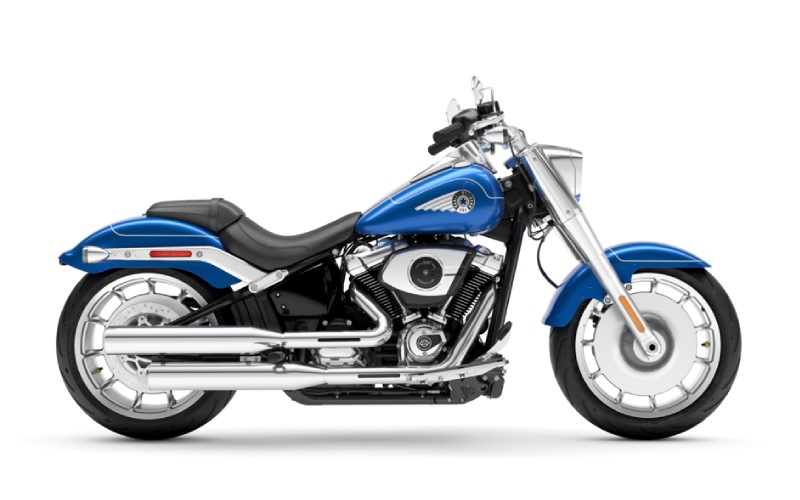A Rider’s Guide to Picking Between the 2025 Harley-Davidson® Fat Boy® vs 2025 Harley-Davidson® Low Rider® S near Annapolis, MD

Eisenhauer's Chesapeake Harley-Davidson - A Rider’s Guide to Picking Between the 2025 Harley-Davidson Fat Boy vs 2025 Harley-Davidson Low Rider S near Annapolis, MD
For many riders in coastal and capital-region communities, the question isn’t whether a 2025 Harley-Davidson cruiser makes sense—it’s which one. The Fat Boy and the Low Rider S both pack Milwaukee-Eight 117 muscle, modern electronics, and unmistakable presence, yet they deliver distinctly different experiences. At Eisenhauer's Chesapeake Harley-Davidson, serving Annapolis, MD, Laurel, MD, and Wilmington, DE, our team is often asked one core question: which platform better matches a given riding style and daily reality? This guide unpacks the nuances with practical, rider-first detail tailored to local routes, traffic, and weekend getaways.
Start by thinking less about specs and more about your habits. Do you value a planted, statuesque stance that feels unshakable on straight-line cruises and relaxed boulevard rides, or do you crave a taller, more athletic posture that encourages late braking and decisive corner exits? The Fat Boy leans into visual muscle, a broad tire footprint, and calm, confident composure backed by a high-performance Milwaukee-Eight 117 Custom engine and a two-into-two exhaust. The Low Rider S counters with a Milwaukee-Eight 117 H.O. tune, a Heavy Breather intake, a lightweight two-into-one exhaust, and a tall monoshock that adds cornering clearance—just the right ingredients for canyon-style rides or assertive passes on two-lane roads. Both bring Ride Modes, Traction Control, Cruise Control, updated hand controls, and USB-C charging, so the practical day-to-day is covered even when the weather changes or your schedule stretches late into the night.
To make your choice more concrete, consider how you’ll use your bike across a normal month—weekday commuting, evening cruises, and weekend errands—then compare that against the riding that inspires you most. The right fit is rarely about peak numbers alone; it’s about how you feel rolling away from a light, settling into highway pace, and threading through familiar bends when traffic clears. Below is a simple checklist we share with riders deciding between these two standouts.
- Primary riding environment: Urban streets and boulevards favor a stable, low-slung stance; mixed backroads reward a taller rear setup with extra cornering clearance.
- Preferred engine character: Broad, relaxed torque delivery suits unhurried cruising; high-rev punch complements assertive riding and rapid transitions.
- Ergonomic feel: A steep-backed solo seat helps under hard acceleration; a low, planted cockpit emphasizes long-haul comfort.
- Styling priorities: Chrome-and-classic silhouettes radiate presence; blacked-out, performance finishes project focused intent.
- Tech expectations: Both offer Ride Modes, Traction Control, Cruise Control, and USB-C charging—evaluate display position and control layout for your preference.
When you map these points to the two bikes, patterns emerge. Riders who want a bold, instantly recognizable silhouette with relaxed authority typically gravitate to the Fat Boy, which soaks up miles and feels unflappable in crosswinds and on grooved pavement. Those who light up at the thought of sharper lines, quicker transitions, and a slightly higher rear stance often pick the Low Rider S, appreciating how the H.O. tune and breathing hardware reward late throttle and aggressive cornering. Neither choice is wrong—both are modern Harley-Davidson cruisers that blend analog charm and digital intelligence in a way that adds confidence, not complexity.
Maintenance and ownership considerations are also straightforward. Both models share a modern Harley-Davidson foundation designed for durability and ease of service, with belt final drive for quiet, low-maintenance operation and a wet multi-plate clutch that stands up to daily use. Access to USB-C power, intuitive hand controls, and clear analog-digital instrumentation simplifies everyday life—no fumbling for data or modes, even with gloves on. And because both platforms are well-supported by the Motor Company’s parts ecosystem, personalization tends to be a matter of taste and priority rather than availability.
Frequently Asked Questions:
Which bike is better for longer highway rides?
The Fat Boy is a standout for long, steady highway days thanks to its low, planted stance, broad tire footprint, and relaxed, torque-rich delivery. The Low Rider S can do distance confidently as well, but its taller rear and performance posture shine brightest where roads get twisty.
Do both models offer modern riding aids like Ride Modes and Traction Control?
Yes. Both the Fat Boy and the Low Rider S bring Ride Modes, Traction Control, and Cruise Control, plus updated ergonomic hand controls that make adjustments intuitive. Each also includes USB-C charging to keep devices powered on longer trips.
How do the exhaust and intake setups affect feel?
The Fat Boy uses a two-into-two exhaust that emphasizes classic sound and balanced flow to complement its torque-rich character. The Low Rider S pairs a Heavy Breather intake with a lightweight two-into-one exhaust for high-flow performance and a crisper, high-rev response.
What if I prioritize lighting and visibility?
The Low Rider S showcases LED lighting, including a bright 5.75-inch LED headlight and LED signals. Both models focus on clear instrumentation and updated controls to keep key information front and center.
Ultimately, the right decision aligns with your routines and the routes that inspire your best rides. If you picture relaxed coastal loops and boulevard cruises punctuated by broad-shoulder style, the Fat Boy is magnetic. If you imagine a more athletic rhythm with late braking, quick throttle, and deeper lean angles, the Low Rider S feels tailor-made. Our team is ready to answer detailed questions about ergonomics, tech, and customization so you can match your bike to your ride with confidence.
